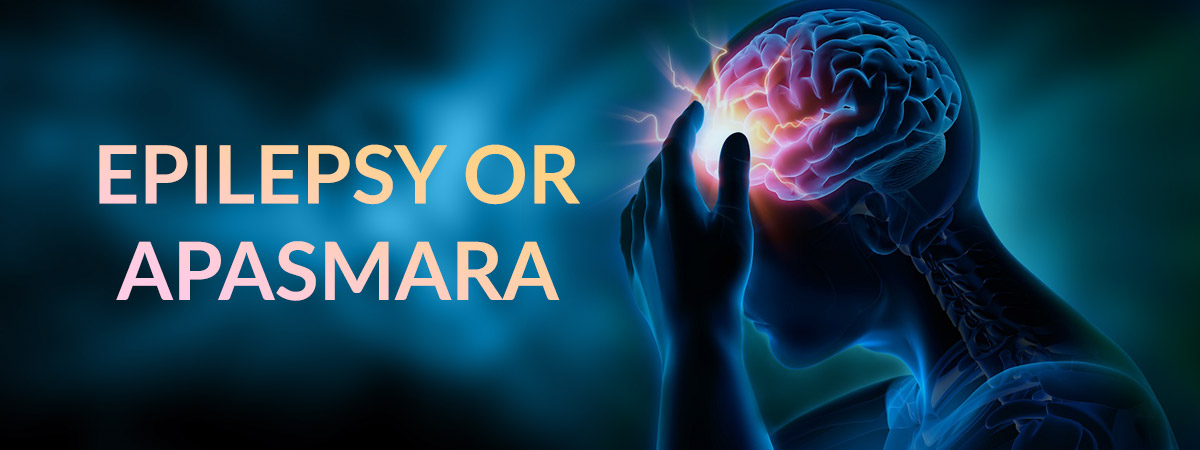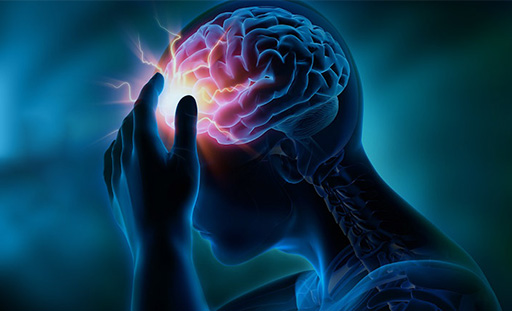
Epilepsy or Apasmara
Epilepsy is an umbrella term. It means that under epilepsy many diseases related to seizures are covered. In this article there is explanation about epilepsy in a simpler way. Epilepsy is explained from both perspectives i.e. modern and Ayurvedic.
Causes of Epilepsy
- Genetics
- Serious brain trauma
- Stroke
- Tumour of brain
- Infection of central nervous system
- Idiopathic causes (idiopathic means where the cause is unknown).
Symptoms present in epilepsy :
The symptoms of epilepsy vary from person to person and also which part of brain is affected and type of seizure. These are explained below :
1. Partial seizures (seizures beginning locally) : In these types of seizures only one part of brain has been affected. These are also called as focal seizures. It is further subdivided into following subtypes :
A. Simple partial seizures : In these seizures consciousness not impaired. In simple partial seizure there can be presence of one or more than one conditions which are mentioned below :
- with motor symptoms
- with somatosensory or special sensory symptoms
- with autonomic symptoms
- with psychic symptoms
In simple language there can be present tingling sensation in limbs, twitching of limbs, dizziness and change in the sensation of touch, taste etc.
B. Complex partial seizures: In complex partial seizure there is impairment of consciousness. The mechanism of onset is described below :
1. Begin as simple partial seizures and progressing to impairment of consciousness
- without automatisms
- with automatisms
2. With impairment of consciousness at onset
- without automatisms
- with automatisms
The general symptoms include repetitive movements, person suddenly becomes blank and unresponsive to the ambience.
A. Absence seizure:
- true absence of seizure. It is also called as petit mal seizure.
- atypical absence
As a result the person become unaware and absent from surroundings for a while
B. Myoclonic seizures: In this type of seizure quick twitching of arms and legs occur.
C. Clonic seizures: In this type of seizure repeated, jerky muscle movements of the face, neck, and arms occur.
D. Tonic seizures: In this type of seizure muscles stiffness occurs.
E. Tonic-clonic seizures: These are also called as grand mal seizures. In this type of seizure repeated, jerky muscle movements of the face, neck, and arms occur.
F. Atonic seizures: In this type of seizure the person loss his muscle control and can fall down suddenly.
Falling, drowning or car accident etc. may occur sometimes due to epileptic seizure. So patient can wear a medical bracelet so that other people present nearby know what to do when a seizure occur. In some countries driving is banned for people who suffer with epilepsy to avoid any tragedy.
How to diagnose epilepsy?
- A qualified physician will do clinical examination based on symptoms present and will take complete medical history.
- The physician will also ask about family history.
- Neurological examination is also done by physician.
- Physician can also advise for investigations like EEG (electroencephalogram). It is most commonly advised to look for abnormal patterns of brain waves.
- Besides this the health care provider can also ask for other investigations like blood tests, CT scan and MRI etc.according to patient’s condition.
Ayurvedic perspective of epilepsy :
- According to Ayurvedic system of medicine modern day disease epilepsy can be correlated with the apasmara roga on basis of clinical presentation.
- Master Charak, an Ayurvedic scholar and physician had dedicated a complete chapter
- apasmara, in his renowned Ayurvedic textbook Charak Samhita.
- Charak Samhita chikitsa sthana’s 10th chapter is apasmara chikitsa adhyaya.
- In this chapter he had explained about causes, pathogenesis, types and management of apasmara roga.
- The term apasmara implies loss of consciousness, excessive movements of hands and feet and
Causes and pathogenesis of apasmara roga :
- People who eat unclean and unhealthy food, in them dosha become aggravated.
- Rajas and Tamas dosha also suppress the Sattva dosha.
- Sattva dosha represents the purity and consciousness of mind.
- Heart of the person also occluded with aggravated dosha.
- Ultimately affliction of mind by worry, fear, anger, grief and anxiety lead to apasmara roga.
Types of apasmara roga :
According to Master Charak there are four types of apasmara roga :
- Vataj apasmara
- Pittaj apasmara
- Kaphaja apasmara
- Sannipataj apasmara
Management of epilepsy :
- Generally epilepsy is treated with anti-epileptic drugs.
- Today there are available a number of medicines for epilepsy like carbamazepine, valproate, levetiracetam, topiramate, phenytoin, lamotrigine, etc.
- Your healthcare provider can decided in a best way that which medicine is suitable for you. Some patients require only one medicine while some may need more than one medicine.
- The duration for which the treatment have to be taken depends on severity of symptoms. However these medications have to be taken for a particular period.
- These medications manage epilepsy upto great extent in most of the people.
- Along with medicines doctor may also advise to incorporate some lifestyle changes and diet changes.
- Ketogenic diet is advised in epileptic patients. The results of ketogenic diet may vary from person to person. It is best to follow a ketogenic diet regimen under dietician or nutritionist.
- In some cases surgical intervention is done where seizures are unable to control with the help of medicines.
Symptoms of apasmara roga :
- Person feels uncomfortable.
- The person become absent minded.
- Unconsciousness may occur.
- Condition of stupor may occur.
- Hallucinations may occur.
- The person can fell down.
- Twitching occurs in tongue, eyes and eyebrows.
- Excessive salivation occurs.
- Jerky movements of hands and feet occur.
- After the seizure is over and the person regain his consciousness, he feels like as he get up from the sleep.

Management of apasmara roga according to Ayurveda :
- Pancha gavya ghrita
- Maha pancha gavya ghrita
- Brahmi ghrita
- Vachadi ghrita
- Saindhavadi ghrita
- Jeevaniya ghrita
- Kashadi ghrita
- Amlakadi ghrita
- Saraswatarishta
- Dashmoolarishta
- Brahmi vatika
